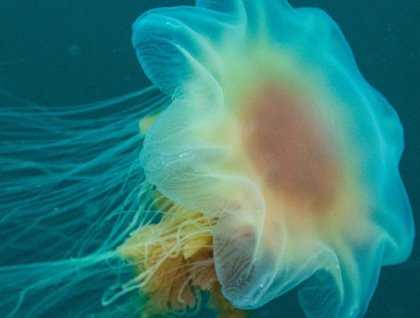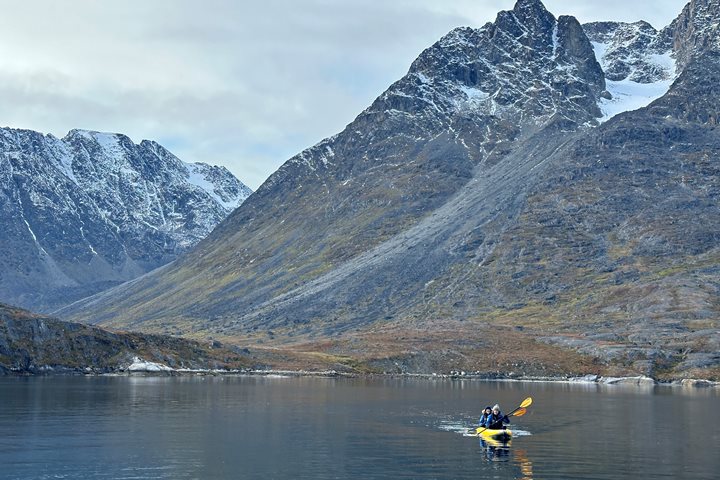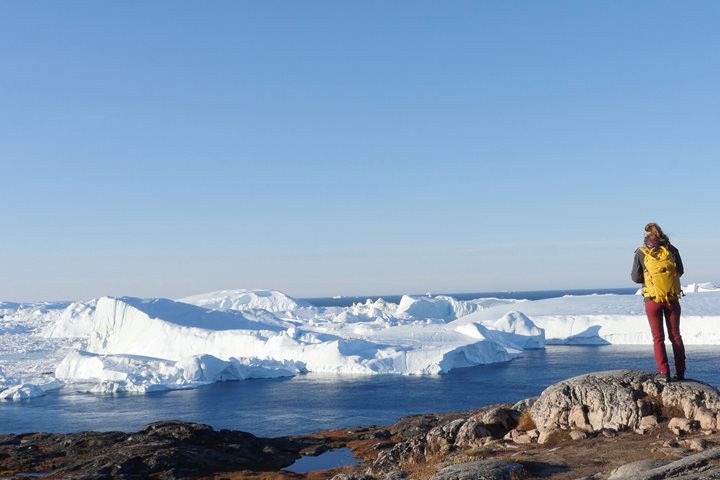On our last morning on this Epic 80°N expedition we had the chance to explore the greener and lusher scenery of southern Greenland. The small village of Sarfanguit, which is home to many ancient Inuit ruins, is located in a beautiful channel surrounded by steep rocky cliffs. Sheltered from the strong winds out in the Davis Strait it was a perfect place for exploring, either by foot or from the Zodiacs. A few small fishing boats cruising around the channel and hauling up countless cod were a clear sign that underneath the water’s surface was a rich marine environment.
As the undersea specialist team geared up for a dive we saw a number of lion’s mane jellyfish float by. Lion’s mane jellyfish are the largest species of jellyfish, and with tentacles that can reportedly grow to well over 100 feet are arguably the longest animal on the planet. While the ones in the water off Sarfanguit were only a few feet long they surrounded us as we descended. At the bottom we were immediately confronted with three large Atlantic cod, distinctive by their barbells and a light colored lateral line. Atlantic cod are generally found in southern Greenland, avoiding the much colder waters further north in the Arctic.
After lunch National Geographic Explorer was back in Sisimiut, the first destination on our voyage back in August. With everything that we have experienced and all the incredible places we have visited since then that day seemed like an age away. Sisimuit is Greenland’s second largest town is clearly a thriving fishing community. The craft shops in town provided the passengers with their final opportunity to purchase gifts for friends and family back home. The local qiviut store proved the most popular among our guests. Qiviut, or muskox wool, is incredibly soft and the store sells hand-knitted gloves, hats or shawls, or even just the yarn itself for the knitting enthusiasts.
After spending our last Danish krone on our own qiviut gifts the dive time once again geared up for our last Arctic dive of the season. Unlike the glassy calm waters of Sarfanguit, the bay in Sisimiut was choppy and the windy conditions led the divers to find a protected area behind a small rocky island. However once under the surface of the water, tranquility reigned again. A beautiful rocky drop-off covered in kelp was home to many of our favorite undersea critters such as nudibranchs, shrimp, hermit crabs, urchins, and the ubiquitous sea star.
As National Geographic Explorer sailed towards its final destination, Kangerlussuaq, the guests gathered in the lounge for the captain’s farewell. Captain Oliver Kruess and expedition leader Lisa Kelley were presented a thank you card from passenger Bill Davies, on behalf of all the passengers. After sharing weeks of awe-inspiring polar bear encounters, breathtaking ice and reaching 80 degrees north with all our guest, both guests and staff were left to reflect on a truly memorable expedition.






